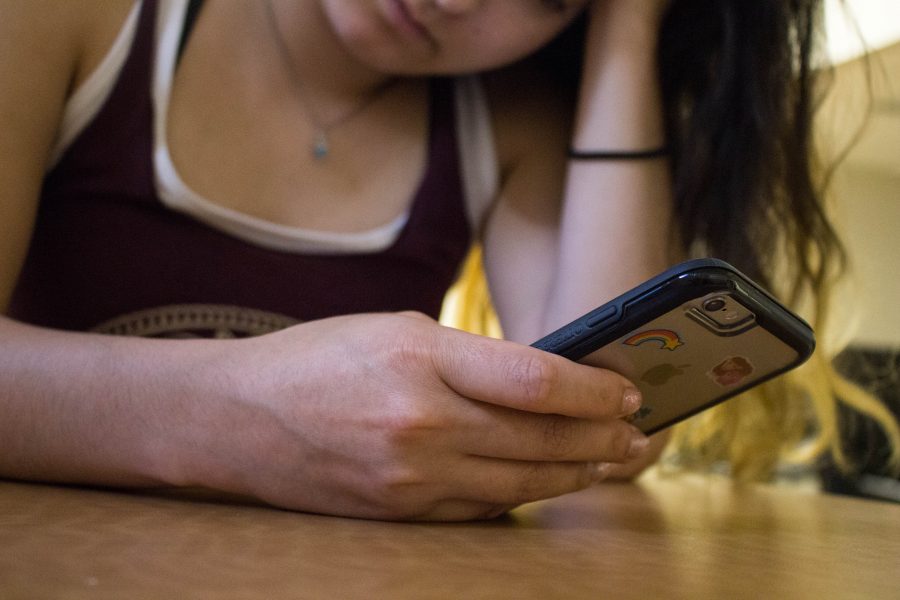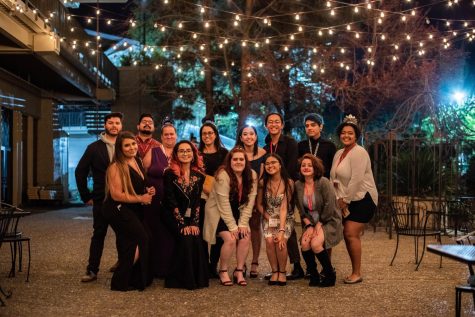Online viewers prefer violence to sexuality
Social media has become an easy outlet for adolescents to post media at the touch of a button, but its content can be taken too far at times.
Social media has become an outlet for individuals to live stream their thoughts and feelings, conveniently at the swipe of a finger or one touch of a button.
It’s quite common for adolescents to post updates about their lives, and you’d think most of the content broadcasted would be appropriate, in terms of being labeled “safe for work.” However, there have been recent trends in posting risqué material, and it appears that these social media sites are becoming more lenient with their rules regarding what can be uploaded and publicly displayed. But they may not be leaning in the right direction.
To be frank, the content policies of many social media outlets have been quite lax in recent years. Even though the posted “community standards” of the massive media force Facebook read “People sometimes share content containing nudity for reasons like awareness campaigns or artistic projects. We restrict the display of nudity because some audiences within our global community may be sensitive to this type of content – particularly because of their cultural background or age,” the website still allows users like Kim Kardashian to post “censored” nude photos. On the other hand, any one can post a video of a motorcyclist getting t-boned at a busy intersection.
Back to these obvious glamour shots, if they can count towards Facebook’s “awareness campaigns or artistic projects,” it may be high time to call into question America’s obsession with it’s skewed and perverse concept of propriety. This column has run quite a few articles concerning body image in media, but the real issue is that the only “body image” that is acceptable is a either famous or dismembered.
Again calling into question Facebook’s social conduct policies, the policies for gore and violent images are as follows: “Facebook has long been a place where people share their experiences and raise awareness about important issues. Sometimes, those experiences and issues involve violence and graphic images of public interest or concern, such as human rights abuses or acts of terrorism. In many instances, when people share this type of content, they are condemning it or raising awareness about it. We remove graphic images when they are shared for sadistic pleasure or to celebrate or glorify violence.”
The way the two excerpts for nudity and violence have been worded is an obvious point. The “nudity” policy jumps straight into “we restrict” and the violence policy defends the photos for three full sentences before claiming that they will be removed if “sadistic pleasure” is confirmed as the reason for posting.
To further prove that the American public is conditioned from a young age to accept more violence than sex is the fact that the Motion Picture Association of America (MPAA) decides that sex is more deserving of an R rating than violence.
The 2010 revised “Classification and Rating Rules” published by the MPAA states that “more than brief nudity will require at least a PG-13 rating,” claiming that is will “generally not be sexually oriented.” So, you can have brief nudity so long as it is not in the least bit sexual. This continues into verbal points of a film as well, as “one of the harsher sexually-derived words” (meaning the one that starts with “f” and rhymes with “truck”) will also warrant a PG-13 rating UNLESS the context of the word is sexual, in which case an R rating is deemed more appropriate.
In contrast, “there may be depictions of violence in a PG-13 movie, but generally not both realistic and extreme or persistent violence.”
What this says about our country as a culture is that we value our violence over our natural love for each other. You can have either a little realistic violence or a lot of hilarious violence, but not a minute of a completely natural interaction between two consenting human beings? And with the age to use Facebook also being 13, just like the age range for those movies, is this really the message we want to project for all the young people just entering the real world, that hitting someone is more appropriate than loving them?










